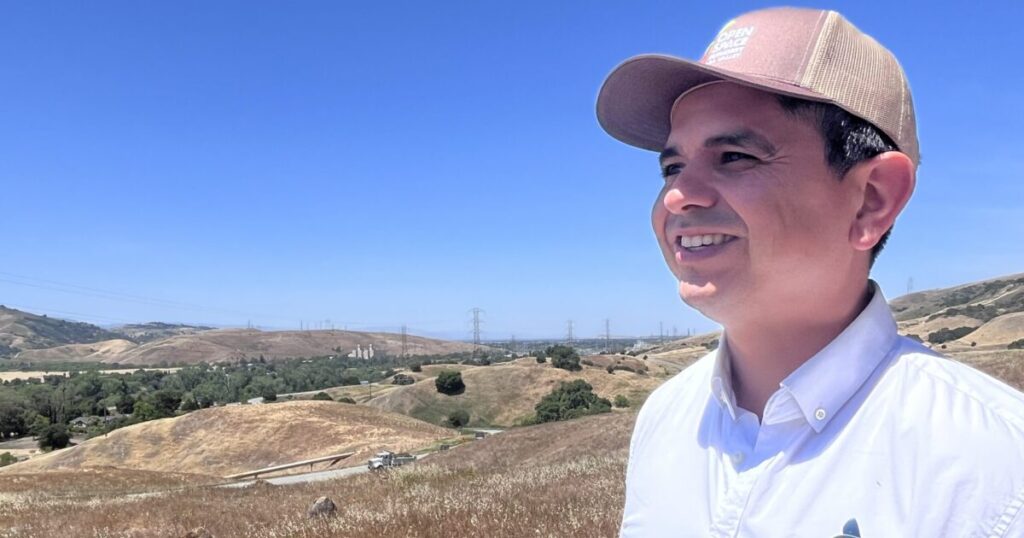A multimillion-dollar purchase of 207 acres by the Peninsula Open Space Trust adds a critical safety facet to the preservation of Coyote Valley in South County.
The $5.5 million purchase of a former dairy farm by the nonprofit protects the northwestern ridge of Coyote Valley from future development. Coyote Valley, which provides wildlife connectivity between the Santa Cruz Mountains and the Diablo range, is essential to the conservation of biodiversity, flood and groundwater protection and climate resilience.
“The property’s a strategic link in Coyote Valley, which is one of the last remaining undeveloped valley floors left in the South Bay,” Gordon Clark, president of the Peninsula Open Space Trust (POST), told San José Spotlight. “The protection of the property helps combat habitat fragmentation. Without a wide range of plants, animals and microorganisms, we can’t have healthy ecosystems that provide the air we breathe, the water we drink and food we eat.”
POST, Santa Clara Valley Open Space Authority and other partners are creating a Coyote Valley Conservation Areas Master Plan as a roadmap for habitat use and restoration of more than 1,500 acres of natural and agricultural land. POST has collaborated with the open space authority on land purchases, scientific studies and restoration efforts to return Coyote Valley to a wetland and encourage agricultural use.
“The open space authority’s role in Coyote Valley is making our broader successes in protecting and restoring the valley and planning for its bright future possible,” Clark said.
In 2021, city and county officials took action to shield more than 300 acres of Coyote Valley land from development. For decades, the expanse of protected open space and farmland was viewed as a future site for sprawling housing development, tech campuses and industrial warehouses. Agricultural land in Coyote Valley has declined by 45% over the preceding two decades.
Marian Vernon, POST wildlife linkages program manager, said animals need to move between habitats to access resources and mating opportunities, but development and roads create barriers and road kill. To combat this, POST is conducting a feasibility study on wildlife crossings at Monterey Road and Highway 101.
“We’re close to honing in on the types of structures we might want to build or existing underground passages we might want to improve for wildlife,” Vernon told San José Spotlight, adding it could take eight years from conception to construction.

Alice Kaufman, policy and advocacy director for Green Foothills, said the property purchased by POST is an important piece of Coyote Valley’s conservation landscape puzzle.
“We’re thrilled that this acquisition was able to happen. More needs to be done,” she told San José Spotlight.
Kaufman pointed out Heritage Oaks Memorial Park plans to shave hillsides to create a large cemetery in Coyote Valley and San Jose may allow development along Monterey Road, which backs up onto Coyote Creek.
Nick Perry, Coyote Valley project director for the Santa Clara Valley Open Space Authority, said the master plan should be completed by 2027. Agricultural production and cattle grazing are important aspects of the plan, he said.
Cattle grazing reduces wildfire risk and keeps non-native grasses down, so native plants and flowers can thrive. Early implementation and pilot testing is underway, and replicas of beaver dams will be installed this summer to create a wetland habitat. Laguna Seca, a seasonal wetland, once covered 1,000 acres of Coyote Valley.
“The fact that we now get to plan it as a natural area, as an agricultural area, as a place people get to connect with nature is an amazing opportunity,” Perry told San José Spotlight.
Contact Lorraine Gabbert at [email protected].



